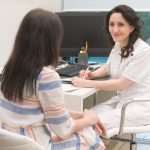5 Tips for using health apps in a clinical setting
Mobile devices have opened up more flexible ways of engaging with patients, improving diagnostic accuracy and optimising health outcomes. Let’s take a look at some key ways doctors can use health apps in a healthcare setting.
1. Understanding the definition of an ‘app’
Generally speaking, an app is a piece of software which can run on the internet, smartphone, computer or any other electronic device.
According to Deloitte, apps are ‘one of the most disruptive innovations of the last century’ because, together with tablet and smartphone devices, they are at the forefront of a revolution in the way people carry out their daily business.’
Applied to a healthcare setting, a recent report released by the RACGP outlines how health apps can be divided into five main categories:
- Apps for healthy living: These form the majority of health apps. They focus on healthy eating, physical activity, smoking prevention and mental wellbeing.
- Apps for clinical diagnosis: Examples include symptom checkers, digital imaging, lab results review
- Apps for remote monitoring: Examples include remote heart monitoring, glucose levels, telehealth services
- Apps for personal health records: They keep a record of personal health information
- Apps for reminders: They focus on medicines compliance
2. Top ways GPs are using apps
The RACGP’s 2017 survey, ‘Views and attitudes towards technological innovation in general practice’, found 50% of GPs use mobile devices such as smartphones and tablets for patient-related work.
According to the RACGP, the main ways GPs are using apps on their mobile devices are to access:
- Calculators
- Therapeutic guidelines
- Medicines information and drug references
- Electronic medical records
- Health education for patients.
3. Popular apps GPs are recommending to patients
According to the RACGP report, just over a quarter of the GPs recommend apps on a regular basis to their patients. The most common apps recommended to patients are those relating to:
- Mental health
- Fitness
- Nutrition; and
- Women’s reproductive health
However the survey showed that more GPs would recommend health apps if there was a trusted source of app advice, apps were endorsed by professional colleges, and there was more education on how to integrate them into clinical practice.
4. Steps to take before recommending an app to patients
The RACGP’s factsheet on health apps outlines some helpful steps to help GPs assess the quality of a healthy living app before using or recommending them:
- Research and review the app description, user ratings and reviews: Some healthy living apps have been expertly assessed.
- Identify whether the app is clear, simple, interesting and engaging
- Determine whether the app uses evidence-based information and is a reliable and respected source of health advice
- Assess whether the app includes behaviour change constructs
- Pilot the app, considering its features, functionality, usability and content accuracy.
- Engage with patients and ask for feedback on whether they found the app to be useful and whether they are continuing to use it.
5. Helpful resources and factsheets
The following resources and factsheets can help you gain a clearer picture of how you can use health apps in your medical practice:
- The RACGP survey: ‘Views and attitudes towards technological innovation in general practice’
- The RACGP’s factsheet on health apps
- VicHealth Healthy Living Apps guide
- The RACGP guide to health app good practice
- The RACGP health applications guide









